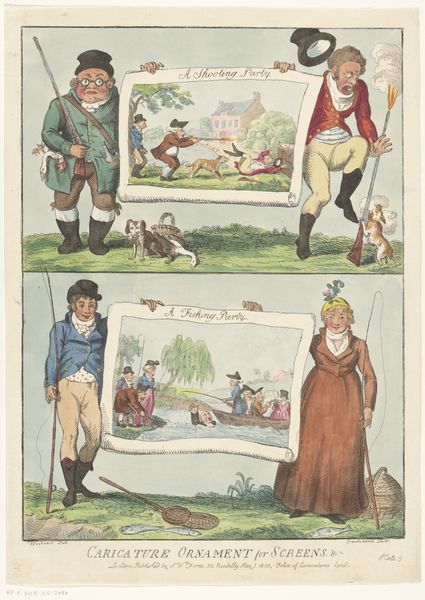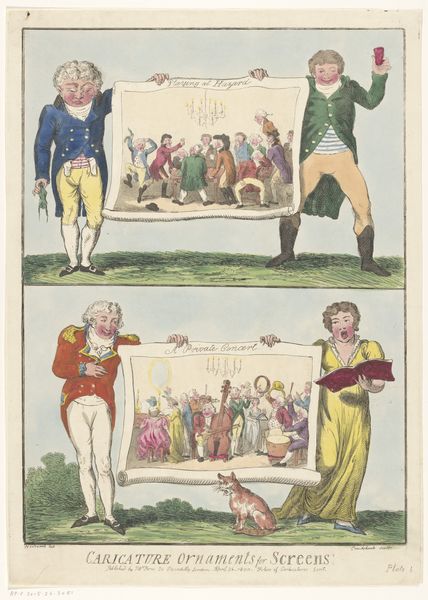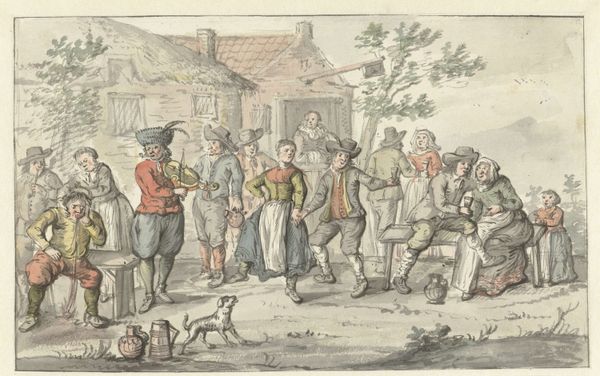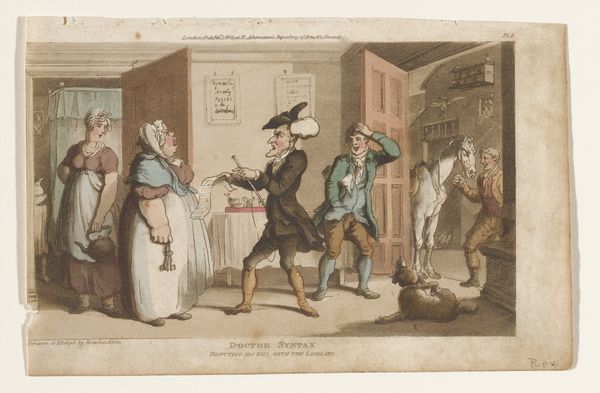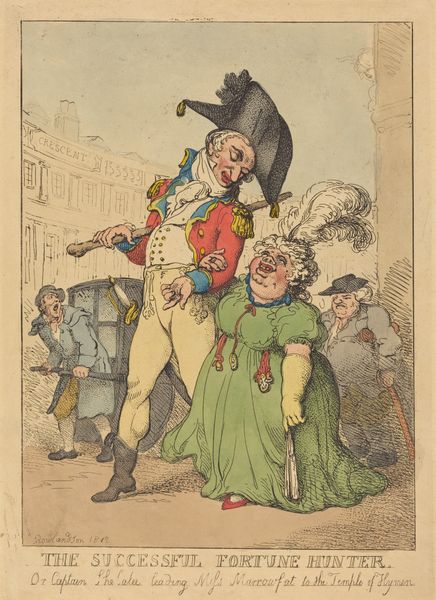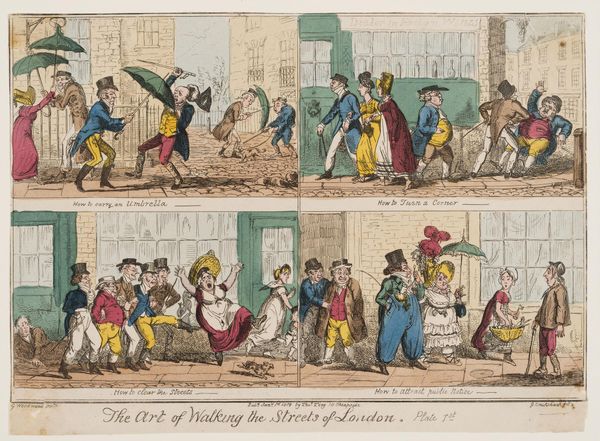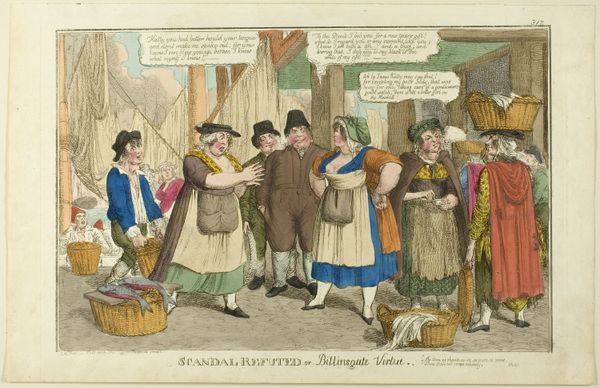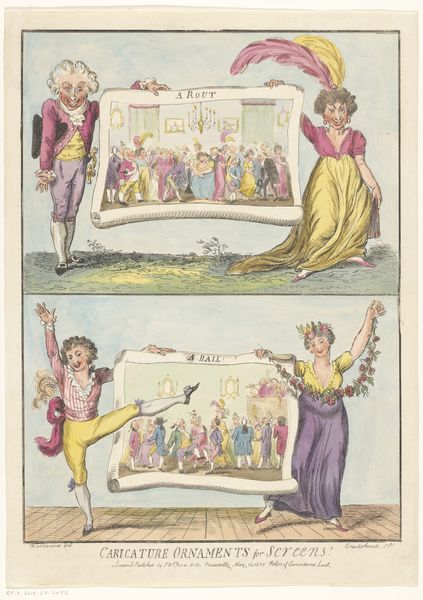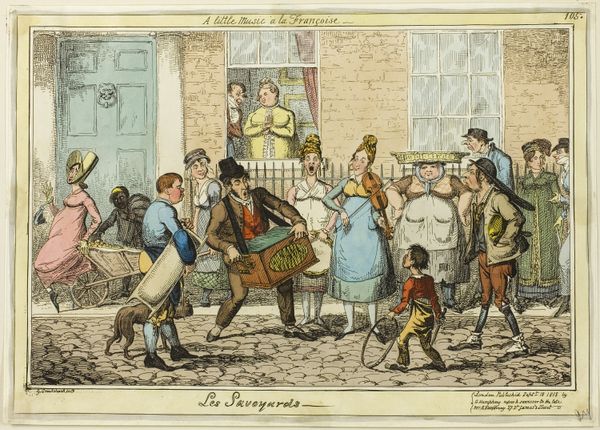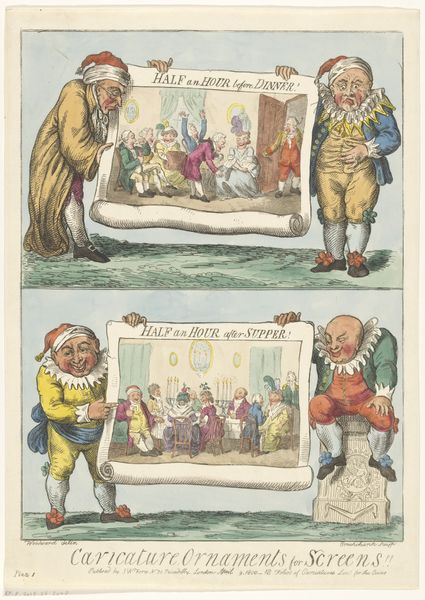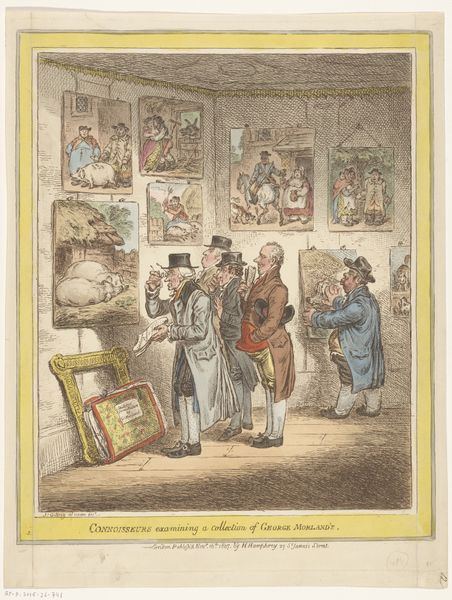
Koffiehuis in Londen en een kroeg op het platteland Possibly 1800 - 1806
0:00
0:00
georgecruikshank
Rijksmuseum
print, etching, watercolor, pen
# print
#
etching
#
caricature
#
watercolor
#
romanticism
#
pen
#
watercolour illustration
#
genre-painting
#
cartoon carciture
#
cartoon theme
Dimensions: height 472 mm, width 337 mm
Copyright: Rijks Museum: Open Domain
Editor: This etching, “Koffiehuis in Londen en een kroeg op het platteland”, which translates to Coffee House in London and a Pub in the Country, is attributed to George Cruikshank and likely dates from around 1800 to 1806. The piece utilizes pen, etching, watercolor, and printmaking techniques. What initially strikes me is how Cruikshank presents two contrasting worlds. As a formalist, how do you interpret the structure and contrasting elements within this composition? Curator: Observe how Cruikshank has segmented the image into two distinct registers, each dedicated to a specific social setting. The geometry of this division imposes a structural dialogue, doesn’t it? How does the use of line and color further differentiate these spaces and, potentially, their corresponding social classes? Editor: I notice the lines are finer and the colors are a bit more refined in the upper scene, depicting the London coffee house, suggesting a certain elegance. Conversely, the lower register feels looser, almost raw, with bolder lines and earthier tones characterizing the rural pub. Is that contrast a conscious element? Curator: Precisely. This variation isn't just descriptive; it’s also deeply analytical. Consider the function of light. In the London scene, light appears more diffuse, controlled—reflective perhaps of a self-aware, disciplined society. The rural scene features a more direct, less refined illumination, signifying an unaffected spontaneity. Note the varying character and function of the architectural spaces, too. The windows! Their function in defining each reality. Editor: That’s a compelling point. It seems he’s used these formal elements to create distinct atmospheres and communicate social nuances without explicitly stating them. It's interesting how structural and stylistic choices underpin the social commentary. Curator: Indeed. Reflect on how these techniques collectively form a cohesive commentary through mere visual means. Form informs content. Editor: I see that now. Thanks for showing how visual composition shapes a powerful statement!
Comments
No comments
Be the first to comment and join the conversation on the ultimate creative platform.
